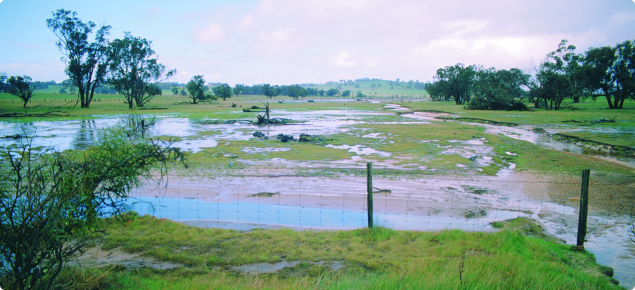First steps after a fire
- Minimise vehicle and livestock traffic on bare ground: detached soil is much more susceptible to erosion.
- Check and repair any upslope surface water management structures. If you don't have them, this is a good time to plan where they should go.
- Protect water resources from contamination with paddock residues and silt.
Prevent silt and other material being washed into dams and other water resources
Temporary sediment fences are a cheap and effective way to reduce contamination of those water resources. The temporary sediment fences can be removed when paddock ground cover has established after the break of season.
See How to build sediment fences (an Agriculture Victoria YouTube video) and download the Building a sediment fence PDF from Agriculture Victoria .
We recommend that you prevent future contamination by constructing or maintaining silt traps, and using fenced, roaded catchments where possible.
At the break of season
- Defer grazing on pastures until there is at least 50% groundcover and feed on offer reaches 500–800 kilograms of dry matter per hectare.
- Minimise soil disturbance when sowing a crop – controlled traffic farming provides a good way of containing any vehicle disturbance.
- Establish early cover crops on the most susceptible land – oats are generally recommended.
In the following year
Identify any areas that had water erosion following the fire, and plan and build water erosion control earthworks.
Areas at risk
Areas at greatest risk from water erosion following a fire include:
- long, steep slopes
- access tracks and rocky areas
- changes of grade in creeklines
- along access tracks where slopes are traversed
- near culverts, where water is concentrated
- anywhere there is existing or past erosion.
Problems from water erosion after a fire
These problems are mostly the same as for any water erosion:
- sheet, rill and gully erosion
- nutrient loss
- sediment build-up in banks and dams – desilting may be required
- contamination of water supplies with ash and burnt vegetation; see water supply management following a fire for more information
- damage to fences, tracks and other infrastructure.
Being prepared for fire
We recommend that dealing with water erosion after a fire is part of a farm plan that includes fire and whole-farm water management.
For more information see bushfire survival plans for landholders.

